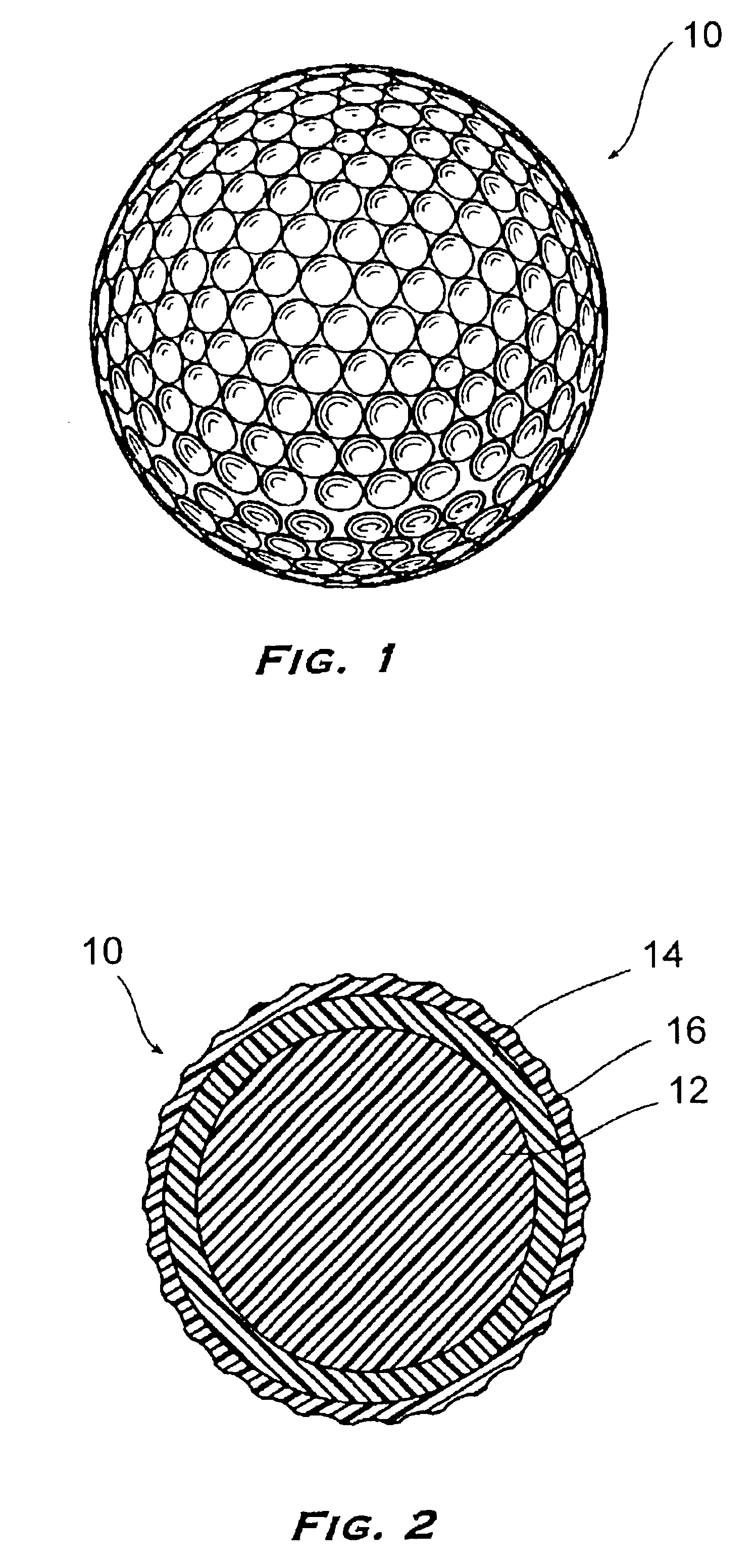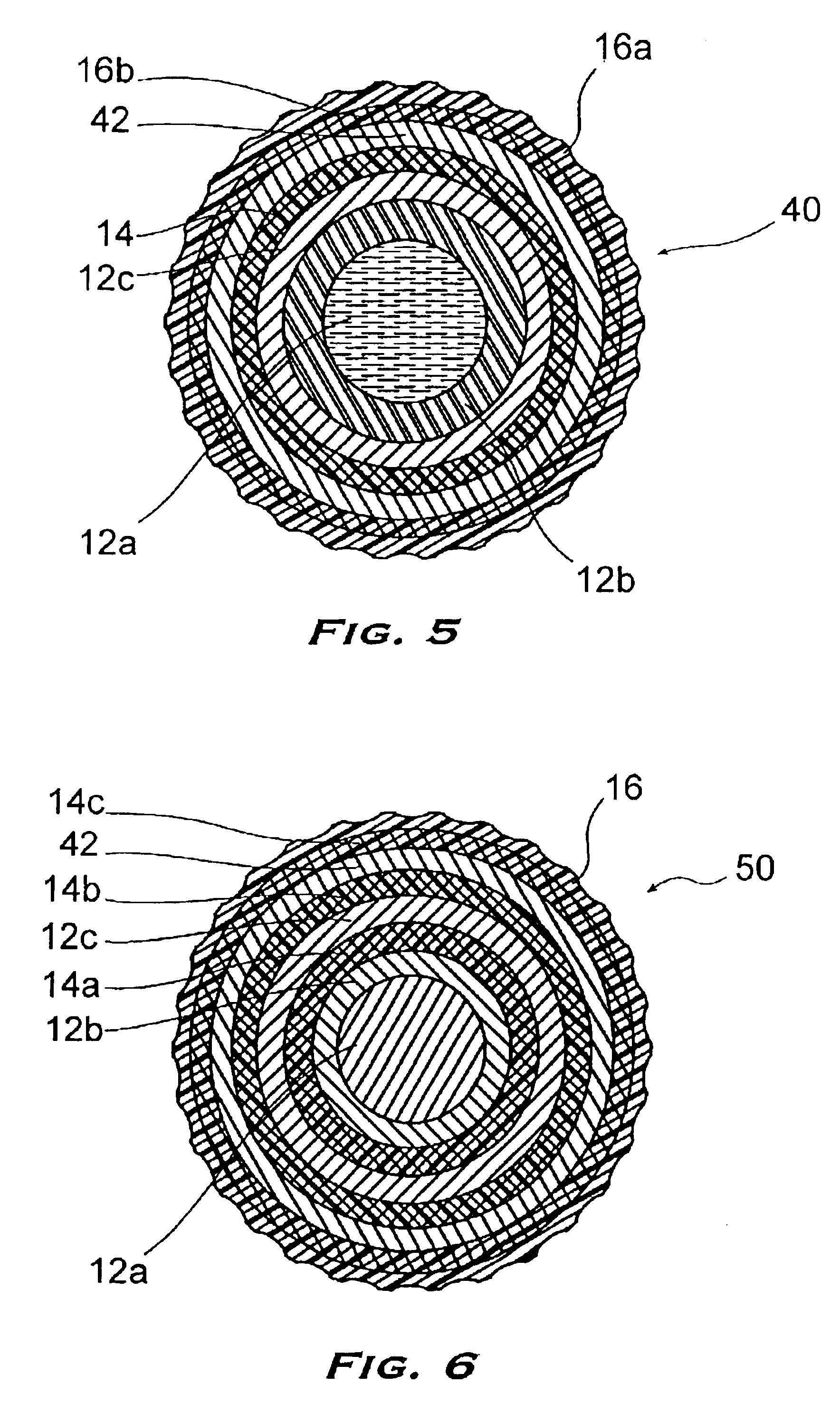Method of making a golf ball vapor barrier layer
a golf ball and moisture vapor barrier technology, applied in the field of golf balls with moisture vapor barrier layers, can solve the problems of reducing reducing the performance of the core, and degrading the properties of the material, so as to reduce reduce and improve the resiliency of the core. , the effect of reducing the transmission of moisture vapor
- Summary
- Abstract
- Description
- Claims
- Application Information
AI Technical Summary
Benefits of technology
Problems solved by technology
Method used
Image
Examples
Embodiment Construction
As shown generally in FIGS. 1 and 2, where like numbers designate like parts, reference number 10 broadly designates a golf ball in accordance to the present invention. Golf ball 10 preferably has a solid core 12, an intermediate layer 14 and a cover 16. Solid core 12 may comprise a single spherical element, or it may comprise a core spherical element with one or more intermediate layers surrounding the spherical element. Solid core 12 can be made from any suitable core materials including thermoset plastics, such as natural rubber, polybutadiene (PBD), polyisoprene, styrene-butadiene or styrene-propylene-diene rubber, and thermoplastics such as ionomer resins, polyamides, polyesters, or a thermoplastic elastomer. Suitable thermoplastic elastomers include Pebax®, Hytrel®, thermoplastic urethane, and Kraton®, which are commercially available from Elf-Atochem, E.I. Du Pont de Nemours and Company, various manufacturers, and Shell Chemical Company, respectively. The core materials can a...
PUM
| Property | Measurement | Unit |
|---|---|---|
| Temperature | aaaaa | aaaaa |
| Fraction | aaaaa | aaaaa |
| Fraction | aaaaa | aaaaa |
Abstract
Description
Claims
Application Information
 Login to View More
Login to View More - R&D
- Intellectual Property
- Life Sciences
- Materials
- Tech Scout
- Unparalleled Data Quality
- Higher Quality Content
- 60% Fewer Hallucinations
Browse by: Latest US Patents, China's latest patents, Technical Efficacy Thesaurus, Application Domain, Technology Topic, Popular Technical Reports.
© 2025 PatSnap. All rights reserved.Legal|Privacy policy|Modern Slavery Act Transparency Statement|Sitemap|About US| Contact US: help@patsnap.com



